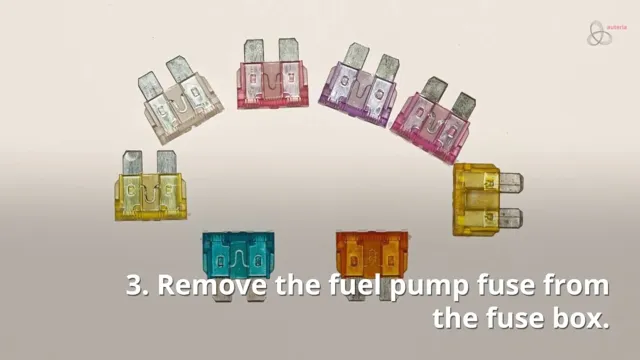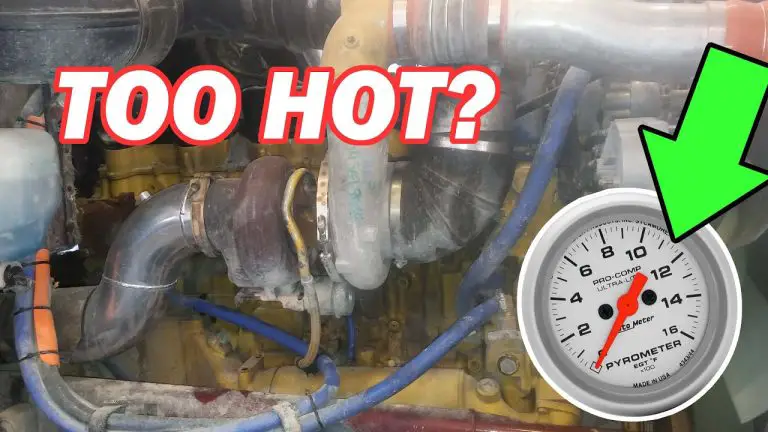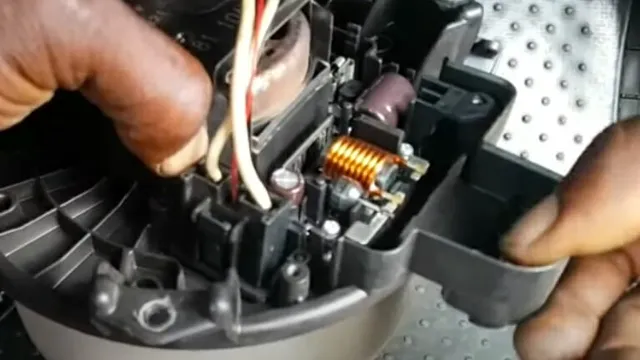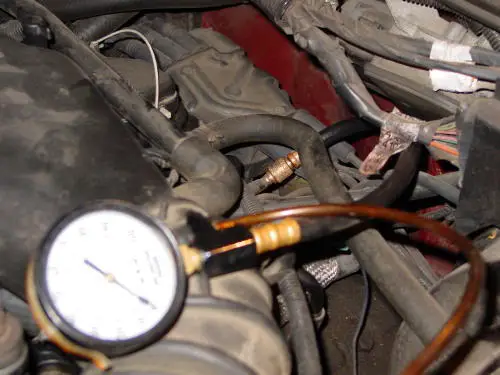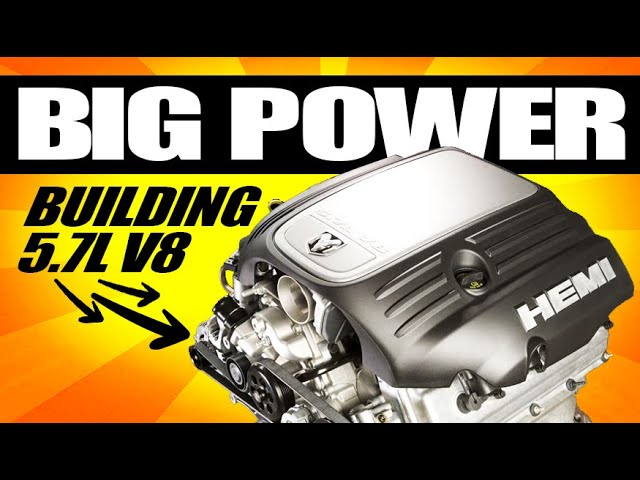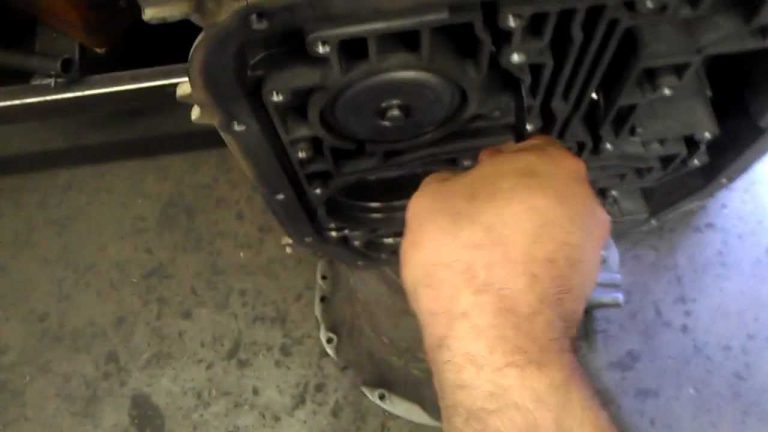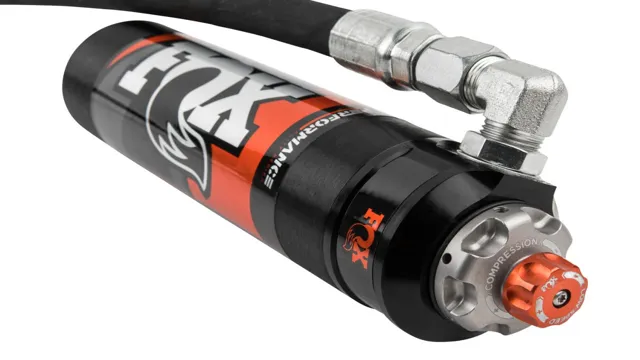Revive Your Engine with Ease: Expert Tips on How to Clean a Clogged Fuel Line
Do you notice your car engine acting more sluggish than usual? Does it seem like your vehicle isn’t getting the power it once did? Your car may be telling you that it has a fuel line clog. A blocked fuel line can be frustrating and cause significant problems for your engine’s performance. But don’t worry, cleaning a clogged fuel line is a straightforward process that anyone can do.
Just like how a person can fall ill due to a blocked lung, a car’s engine can’t perform its best with a blocked fuel line. Similar to how a person needs to clear a blocked lung to breathe easier, your vehicle needs a clean fuel line to perform better. Cleaning a clogged fuel line is critical to the overall health and longevity of your vehicle.
Let’s dive deeper into the topic and explore ways to clean a clogged fuel line.
Understanding the Problem
So, you find yourself with a clogged fuel line, huh? It’s a common problem that many people face, especially if they own an older vehicle. The first thing you need to do is understand what causes the problem in the first place. Typically, a clogged fuel line occurs when debris, dirt, or rust particles build up and prevent fuel from flowing freely through the line.
This can lead to poor performance, decreased gas mileage, and even engine damage if left untreated. So, how do you go about cleaning out a clogged fuel line? Well, there are a few methods you can try, such as using fuel additives or manually unclogging it. We’ll explore these options in more detail in our upcoming articles, so stay tuned!
Signs of a Clogged Fuel Line
If you have been experiencing issues with your vehicle’s fuel system, one possible cause could be a clogged fuel line. A fuel line that is blocked or obstructed can lead to a variety of problems, from poor performance to complete engine failure. If you have noticed a decrease in power or acceleration, difficulty starting the engine, or if it has stalled unexpectedly, it may be a sign that your fuel line needs attention.
In severe cases, you may even notice a strong odor of gasoline coming from the engine. It’s important to address any issues with your fuel system as soon as possible to avoid causing further damage. By taking your vehicle to a trusted mechanic, they can diagnose the problem and recommend the best course of action, which may include cleaning or replacing the fuel line.
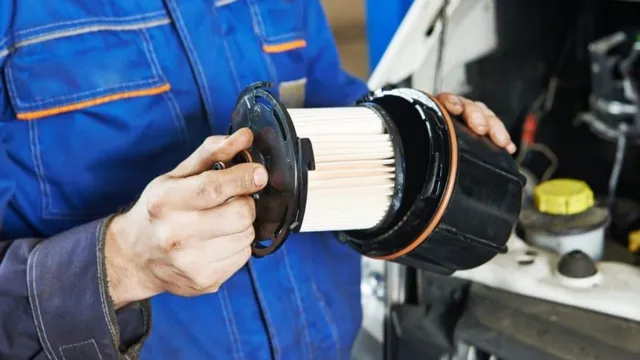
Causes of a Clogged Fuel Line
A clogged fuel line can be a frustrating problem for any driver. Understanding the causes of this issue can help prevent it from happening again in the future. One of the main causes of a clogged fuel line is a buildup of debris in the fuel tank.
As the fuel pump continuously draws fuel from the tank, debris can accumulate in the fuel line and eventually cause a blockage. Other causes may include a damaged fuel filter or a faulty fuel pump. It is important to regularly inspect and replace these components to prevent a clogged fuel line.
By taking preventative measures, drivers can ensure their vehicles are running smoothly and avoid potential breakdowns on the road.
Tools and Materials You Will Need
If you have a car that has been idle for a while, you might notice that the fuel line gets clogged, which can prevent fuel from flowing to the engine. To clean a clogged fuel line, you will need a few tools and materials. First, you will need a fuel pressure gauge to check the pressure of your fuel system.
Additionally, you will need a fuel injector cleaning kit to clean dirty injectors. You will also need a set of screwdrivers, a wrench, and pliers to remove and reinstall the fuel line. After you have gathered all the necessary tools and materials, you can begin cleaning the fuel line.
In essence, you would disconnect the fuel line from the fuel pump and use the fuel injector cleaning kit to flush out any dirt or debris that may be clogging the line. Once you have reconnected the fuel line, check the pressure to make sure the fuel system is working correctly. Ultimately, using the appropriate tools and materials is the best way to clean a clogged fuel line and keep your car running smoothly.
Safety Gear
When it comes to woodworking, safety should always be a top priority. This means that you need to have the right safety gear on hand. The tools and materials that you will need include safety glasses or goggles, a dust mask, earplugs, and gloves.
Safety glasses or goggles protect your eyes from flying debris and sawdust. A dust mask keeps you from inhaling sawdust, which can be harmful to your health. Earplugs protect your hearing, especially when using power tools, which can be loud.
Lastly, gloves protect your hands from splinters and sharp tools. Always make sure that you wear your safety gear every time you work on a project, no matter how small. It’s better to be safe than sorry.
Cleaning Materials
When it comes to cleaning materials, having the right tools and materials on hand can make all the difference in getting the job done efficiently and effectively. Some of the essential tools you will need include scrub brushes, sponges, microfiber cloths, and a vacuum cleaner with various attachments. You’ll also need cleaning solutions such as all-purpose cleaners, window cleaners, and floor cleaners.
It’s important to read labels and choose products that are environmentally friendly and safe for your specific surfaces. Additionally, consider investing in some protective gear like rubber gloves and face masks to keep yourself safe while cleaning. With the right tools and materials, you’ll be able to tackle any cleaning task with ease and achieve a sparkling clean home.
Diagnostic Tools
When it comes to diagnosing vehicle issues, having the right tools and materials can make all the difference. Some basic diagnostic tools you will need include a quality scan tool, a voltage meter, and an OBD-II code reader. These tools allow you to check codes, test electrical components, and diagnose engine problems.
In addition to the basic diagnostic tools, you’ll also need a good set of wrenches and sockets, as well as a jack and jack stands for lifting the vehicle off the ground. If you’re new to automotive repair, it can be overwhelming to figure out what tools you need. To make things easier, consider purchasing a pre-made diagnostic kit or toolset, which will come with all the necessary tools for your specific make and model of vehicle.
It’s also important to invest in quality tools, as they will last longer and be more reliable than cheap, low-quality tools. Overall, having the right diagnostic tools and materials is essential for successfully diagnosing and repairing vehicle issues. Whether you’re a professional mechanic or a beginner DIYer, investing in quality tools is worth it in the long run.
So, make sure you have everything you need before diving into any repairs or diagnostics to save yourself time, money, and headaches down the road.
Steps to Clean a Clogged Fuel Line
Having a clogged fuel line can be a real headache for any car owner. It can cause your vehicle to stall, sputter, or even refuse to start. However, cleaning a clogged fuel line is not as difficult as you might think.
The first step is to diagnose the problem by checking the fuel filter and fuel pump. If these are the culprits, then it’s time to replace them. But if the issue is a clogged fuel line, you can try cleaning it with some fuel injector cleaner.
Add the solution to your gas tank and let it work its magic. Alternatively, you can disconnect the fuel line and use compressed air to blow out any debris or dirt causing the blockage. A clogged fuel line is not something you want to ignore, as it can cause bigger problems.
Follow these simple steps to diagnose and fix the issue, and your car will be running smoothly again in no time.
Step 1: Preparation
If your vehicle is showing signs of fuel line blockage, you need to prepare adequately before taking on the task of cleaning it. First, you need to identify the type of fuel that your vehicle uses and gather all the necessary tools and equipment like a pipe wrench, screwdriver, gloves, safety glasses, a container for fuel, and a fuel pressure gauge. You should park your car away from potential fire hazards and wear appropriate protective gear.
Start by disconnecting the fuel pump and then removing the fuel filter to drain the remaining fuel from the line. Afterward, use a pipe wrench to remove the fuel line connections and clean them thoroughly using a brush and a cloth. Finish up by inspecting the fuel line and replacing any damaged parts before reconnecting the components and testing the fuel pressure.
These preparations will ensure that you have a safe and successful fuel line cleaning experience. The crucial keyword used in this section is “clogged fuel line.”
Step 2: Identify the Location of the Clog
If your car is experiencing issues starting, sputtering, or stalling, there’s a good chance that your fuel line is clogged. The first step in fixing this issue is to identify the location of the clog. The fuel line usually runs from the tank to the engine, and there are a few key areas that often experience blockages, such as the fuel filter, fuel pump, and fuel injectors.
Start by inspecting the fuel filter, which is designed to trap debris and sediment before it enters the engine. A dirty or clogged fuel filter is a common culprit, and it should be replaced if necessary. If the filter is clean, move on to the fuel pump.
A malfunctioning pump can prevent fuel from flowing through the line, causing a clog. Finally, check the fuel injectors for any blockages. These can be cleaned with a fuel system cleaner or replaced if necessary.
By pinpointing the location of the clog, you can take the necessary steps to get your car back on the road and running smoothly.
Step 3: Disconnect the Fuel Line
If you’re experiencing issues with your vehicle’s fuel system, then it might be time to clean your clogged fuel line. One crucial step in this process is to disconnect the fuel line, which requires some caution. Begin by locating the fuel line and checking for any leaks or damages.
Turn off your engine and remove the fuel pump fuse or relay to prevent the fuel from flowing. Then, relieve the fuel pressure by opening the fuel cap. Next, use a flare nut wrench to loosen the fittings and disconnect the fuel line from the engine.
Be careful not to force it or damage the line as you remove it. Once disconnected, inspect the fuel line and clean it thoroughly using an appropriate cleaning solution. This step helps to restore the fuel line’s functionality and avoid any future clogging issues.
Finally, when reassembling the fuel system, remember to use the correct torque specs on the fittings to prevent leaks. By following these steps, you can effectively clean your clogged fuel line and restore your vehicle’s performance.
Step 4: Clean the Fuel System
Cleaning a clogged fuel line is an essential task that you must undertake from time to time to ensure the smooth functioning of your engine. Step 4 of the fuel line cleaning process is one of the most crucial ones, which is cleaning the fuel system. This step helps to get rid of the contaminants and debris that may have accumulated over time in the fuel tank, fuel lines, and fuel injectors.
You can use a fuel system cleaner to do this job effectively. Fuel system cleaners are chemical solutions designed to clean the fuel system and remove the buildup of dirt, varnish, and carbon deposits from injectors and intake valves. These cleaners can be added to the fuel tank and will work their way through the fuel lines and injectors, cleaning them as they go.
The process can take anywhere from a few hours to a few days, depending on the amount of buildup inside the fuel system. By the end of it, your fuel system will be clean, and your engine will run smoother. Remember to use high-quality fuel and change your fuel filter regularly to keep your fuel system clean and clog-free.
Step 5: Inspect the Fuel Line
When it comes to cleaning a clogged fuel line, it’s important not to overlook the fuel line itself. Over time, fuel lines can become clogged with debris, rust, or sediment, making it difficult for fuel to flow properly to the engine. To inspect the fuel line, start by disconnecting it from the engine.
Check for any signs of damage, such as cracks, bulges, or leaks. If the fuel line appears damaged, it’s important to replace it before continuing with the cleaning process. If the fuel line appears to be in good condition, use a flashlight to check for any signs of clogs or obstructions.
If you see any buildup, it’s important to clean it out using a fuel line cleaner or by blowing compressed air through the line. By taking the time to inspect and clean the fuel line, you can ensure that fuel is flowing properly to your engine, improving your vehicle’s performance and efficiency.
Preventative Measures
If you’re wondering how to clean a clogged fuel line, it’s important to keep in mind that preventative measures can go a long way in avoiding this issue altogether. One key step is to regularly replace your fuel filter according to the manufacturer’s recommended schedule. This can help prevent debris and contaminants from reaching your fuel line in the first place.
It’s also important to make sure you’re using high-quality fuel, as dirty or contaminated fuel can cause buildup and clogs in your fuel system. Finally, avoiding running your vehicle on a near-empty gas tank can help prevent sediment and particles from being drawn into your fuel system. By taking these simple measures, you can help ensure that your fuel line stays clear and your vehicle operates smoothly.
Regular Maintenance
Regular maintenance is one of the most crucial steps you can take to keep your equipment running smoothly for a long time. As the old saying goes, prevention is better than a cure, and that holds true for machines as well. By regularly checking and fixing minor issues, you can prevent more significant problems from occurring, thus reducing downtime and repair costs.
A few simple measures can make a world of difference, such as cleaning the equipment after each use, lubricating moving parts, checking fluid levels and changing filters. Neglecting these simple steps can result in costly repairs, reduced efficiency and even equipment failure. By conducting regular maintenance, you’ll extend your equipment’s lifespan and ensure it works optimally, saving you time and money in the long run.
Using Quality Fuel
Using quality fuel is essential in preventing any potential damage to your vehicle’s engine and ensuring that it performs at its best. Investing in high-quality gasoline or diesel can help to maintain your engine’s cleanliness, reducing the buildup of deposits that can negatively impact its performance. Low-quality fuel can also lead to harmful emissions, compromising your vehicle’s environmental friendliness and contributing to air pollution.
By opting for premium fuel, you can also improve your car’s fuel efficiency, saving you money in the long run. So, next time you’re at the pump, consider the benefits of using a quality fuel to keep your engine running smoothly and efficiently.
Avoiding Contamination
To prevent contamination in our everyday lives, we should take preventative measures. One critical step is maintaining good hygiene by frequently washing our hands with soap and water, especially before and after handling food and using the bathroom. We should also ensure that we handle raw meat and eggs with care and cook them thoroughly to kill any bacteria that may be present.
It’s also essential to keep surfaces clean, especially in the kitchen and bathroom, where bacteria can accumulate quickly. Using disinfectant sprays or wipes regularly can help eliminate bacteria on surfaces. Lastly, it is crucial to handle and store food properly, keeping it at the right temperature to prevent bacterial growth.
By taking these simple steps, we can significantly reduce the likelihood of contamination and protect ourselves and others from potential health hazards.
In Conclusion
In conclusion, cleaning a clogged fuel line is like unclogging a traffic jam on a busy highway. You need patience, persistence, and a bit of elbow grease to get things moving again. Whether you’re dealing with old sediment, rust, or other debris, the key is to use the right tools and techniques to break through the blockage.
So don’t let a dirty fuel line slow you down – with a little know-how, you can get your engine revving like new in no time!”
FAQs
What causes a fuel line to become clogged?
A fuel line can become clogged due to the buildup of dirt, debris, or rust particles that accumulate over time. Additionally, a clogged fuel filter can lead to a clogged fuel line.
What are some symptoms of a clogged fuel line?
Some symptoms of a clogged fuel line include rough idling, difficulty starting the engine, decreased engine performance, and stalling.
Can I clean a clogged fuel line myself, or should I take it to a professional mechanic?
In most cases, it is best to take your vehicle to a professional mechanic to clean a clogged fuel line. They have the tools and expertise to properly diagnose and fix the problem.
How much does it typically cost to clean a clogged fuel line?
The cost to clean a clogged fuel line can vary depending on the severity of the issue, as well as the make and model of the vehicle. On average, you can expect to pay anywhere from $100 to $300 for this service.

